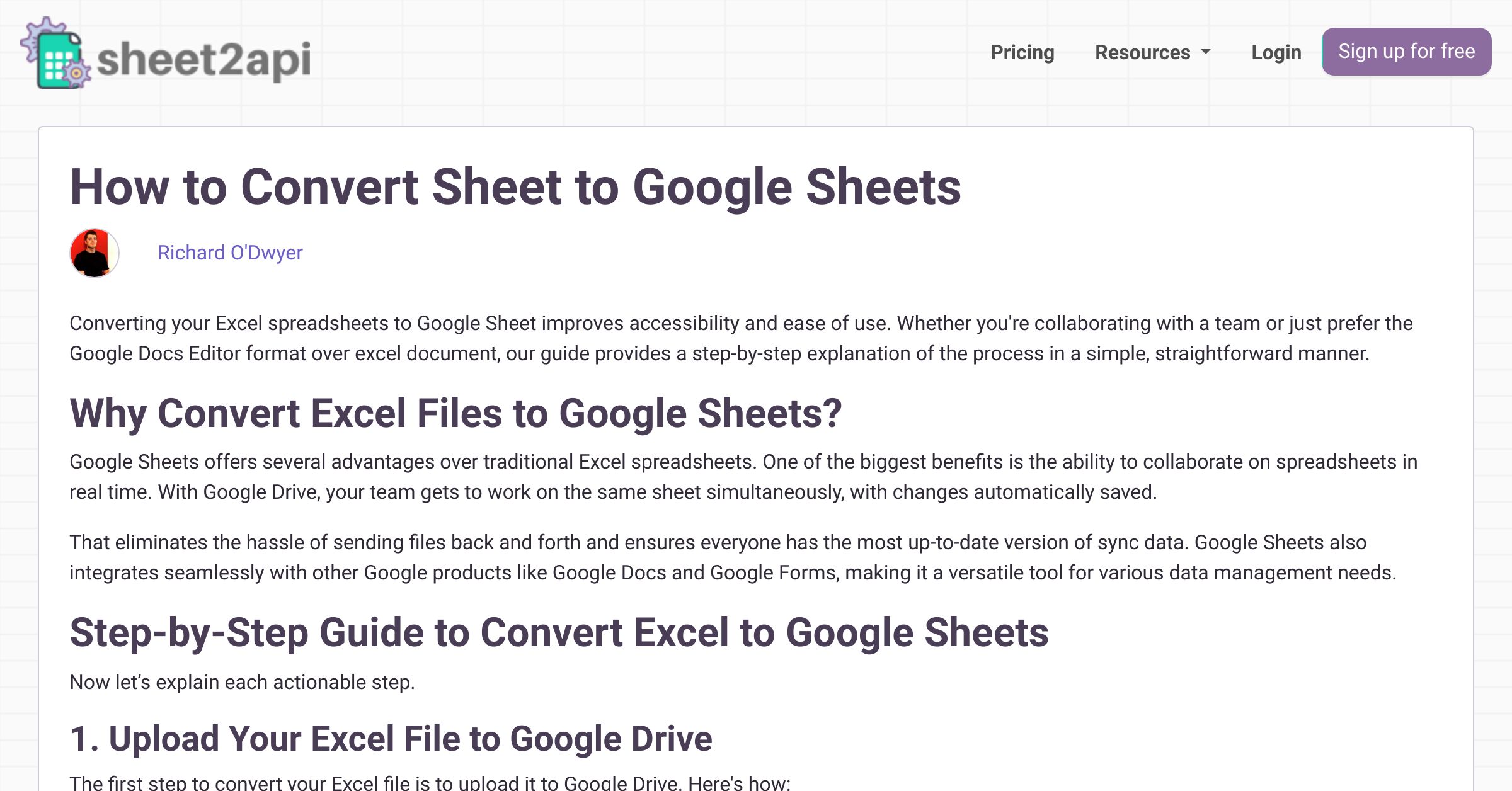Convert Excel Sheets to Separate Files Easily

Are you dealing with large Excel workbooks that contain multiple sheets, each representing different datasets? If so, you might often find yourself in a situation where you need to convert these sheets into separate Excel files for better organization or analysis purposes. This guide will help you through the process of converting Excel sheets into individual files, making your data management much more efficient.
Why Convert Excel Sheets to Separate Files?

- Clarity and Organization: Splitting sheets into separate files helps in organizing large datasets.
- Accessibility: Sharing specific data with team members becomes easier without exposing the entire workbook.
- Reduced File Size: Individual files might be lighter to handle and send via email.
- Easier Analysis: Allows for focused analysis on specific sheets without the clutter of an entire workbook.
How to Convert Excel Sheets into Separate Files?

The process to split an Excel workbook into individual files is straightforward but involves a few steps. Here’s how you can do it:
- Open Your Excel Workbook: Launch Excel and open the workbook with the sheets you want to separate.
- Save the Workbook: Save the workbook in a location you can easily access.
- Use VBA Macro: If you're comfortable with VBA, you can use the following code to automate the process:
Sub SplitSheetsToFiles() Dim ws As Worksheet, savePath As String savePath = Application.DefaultFilePath & "\" For Each ws In ThisWorkbook.Sheets ws.Copy With ActiveWorkbook .SaveAs Filename:=savePath & ws.Name & ".xlsx" .Close False End With Next ws MsgBox "Sheets have been saved to " & savePath End Sub - Run the Macro: After adding the macro, go to the Developer tab (you might need to enable it first), click on "Macros", select "SplitSheetsToFiles" and run it. Your sheets will now be saved as individual files in the same directory as your original workbook.
📝 Note: Macros might not be enabled by default in Excel due to security settings. You can enable macros by going to File > Options > Trust Center > Trust Center Settings > Macro Settings, and selecting "Enable all macros".
Alternative Method: Using Third-Party Tools

If you're not familiar with VBA or prefer not to use macros, several third-party tools can perform this task:
- Excel Power Tools: This offers a suite of tools including sheet separators.
- OfficeTab: Allows you to manage multiple sheets within separate tabs, which can then be saved individually.
- ASPose Cells: A powerful .NET and Java library for Excel manipulation, with methods to split sheets.
Using Manual Method

If you prefer avoiding automation or external tools, you can manually convert Excel sheets to separate files:
- Select the Sheet: Right-click on the tab of the sheet you want to save individually and select "Move or Copy".
- Create a New Workbook: In the "Move or Copy" dialog, select "(new book)" from the dropdown and check "Create a copy".
- Save the New Workbook: In the new workbook, go to File > Save As and save with an appropriate name.
- Repeat: Continue with each sheet you need to separate.
This manual approach might be time-consuming but offers full control over the process and is free from macro or third-party tool dependencies.
Tips for Effective Data Management

Here are some tips to consider when managing your Excel sheets:
- Backup: Always keep a backup of your original workbook before making any changes.
- Naming Convention: Use a consistent naming scheme for your new files to maintain order.
- Metadata: Ensure sheet names are descriptive and include metadata like date or version for easy reference.
- Automation: For recurring tasks, invest time in learning VBA or find a tool that can automate your specific needs.
In wrapping up this exploration of how to convert Excel sheets into separate files, we’ve uncovered several methods to tackle this common data management challenge. Whether you opt for the efficiency of VBA macros, the reliability of third-party tools, or the meticulous control of the manual process, the goal remains the same: to streamline your data organization for enhanced productivity. Remember, the choice between these methods should align with your technical comfort level, the complexity of your dataset, and your long-term data management strategy. This approach not only aids in making data more accessible and manageable but also sets the stage for more focused analysis and collaboration.
Can I revert the process if I mistakenly split sheets?

+
If you still have the original workbook, you can simply copy and paste the sheets back into it. Otherwise, you would need to manually combine the sheets again or use a VBA script to do so.
Is it possible to split sheets based on certain criteria?

+
Yes, with more complex VBA scripts or third-party tools like ASPose Cells, you can automate splitting sheets based on data values, headers, or any other criteria within the sheets.
How can I automate this process for new workbooks?

+
You can embed the VBA script directly into your Excel template or create a separate utility workbook that loads the macro when needed. This way, every time you open or use the workbook, you have the macro available to split sheets automatically.



